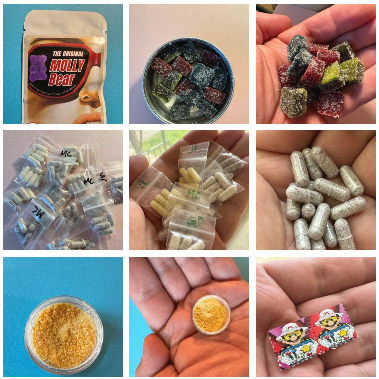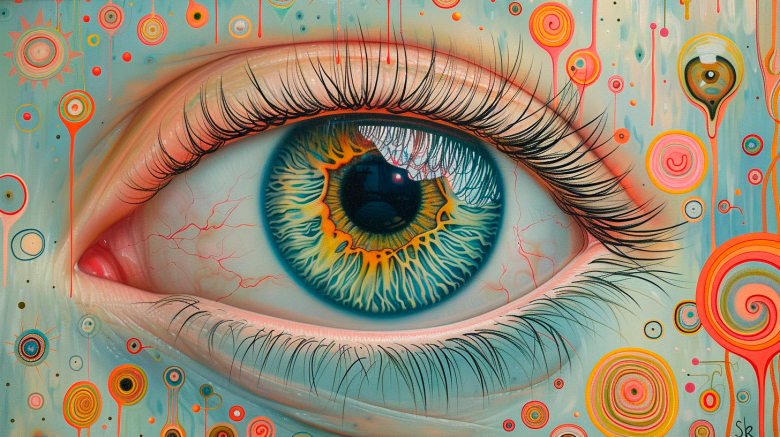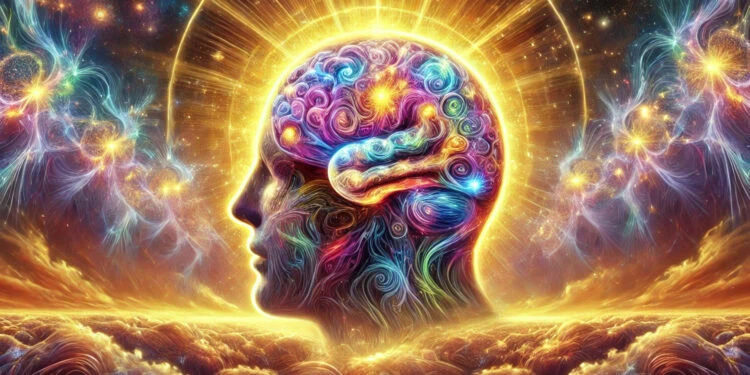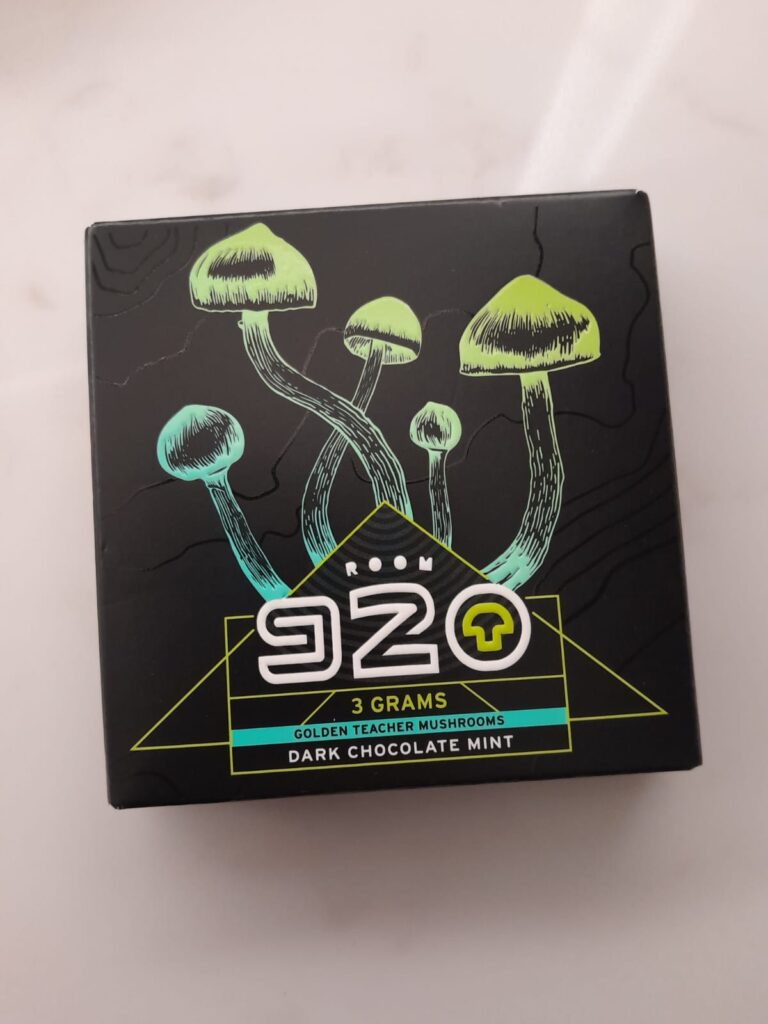
You may be a psychonaut who has been entering non-ordinary states of consciousness to explore your mind for many years. Or you may be someone completely new to the world of psychedelics but curious about their effects and uses.
This article tackles the most common questions people have about psychedelics. It summarizes the most recent evidence and provides links to our informative articles for in-depth learning.
What are psychedelics?
For someone who has never heard of psychedelics, let’s start with defining what they are. The term “psychedelic” is derived from the Greek words “psyche,” meaning mind, soul, or spirit, and “delos,” meaning to reveal or manifest.
Psychedelics are a class of substances that alter normal consciousness, mood, and various cognitive processes. They produce psychoactive effects that can change our thoughts and perceptions.
Psychedelics can be natural or synthetic. Some examples include psilocybin (found in certain mushrooms), LSD (lysergic acid diethylamide), DMT (dimethyltryptamine), MDMA (3,4-methylenedioxymethamphetamine), and others.
What are the different types of psychedelics?

You might be curious about the various psychedelics and how they are categorized. Psychedelics can be grouped as follows based on what the chemical structure of their molecule looks like.
- Tryptamines such as psilocybin and DMT
- Phenethylamines such as MDMA and 2C-B
- Lysergamides such as LSD
Psychedelics can also be categorized into pharmacological classes based on how they make you feel.
- Serotonergic psychedelics (5-HT2A receptor agonists) are known for producing altered perceptions and mystical experiences. Examples include LSD, psilocybin, and DMT.
- Empathogen-entactogens (serotonin releasers) are characterized by feelings of empathy, emotional openness, and increased sociability. Examples include MDMA and MDA.
- Dissociatives can induce a sense of detachment from reality. Examples include ketamine and phencyclidine (PCP).
What do psychedelics do in the brain?
Some people want to understand what happens in the brain if someone takes psychedelics. Psychedelics primarily interact with the serotonin system in the brain, particularly the serotonin 2A receptor (5-HT2A).
Here’s a brief overview of the neurobiological mechanisms and their impact.
Serotonin Receptor Activation
Psychedelics, such as psilocybin, LSD, and DMT, primarily work by binding to serotonin receptors in the brain. The 5-HT2A receptor is especially important in mediating the psychedelic effects.
Increased Neurotransmitter Release
Activation of the 5-HT2A receptor leads to an increased release of neurotransmitters, particularly serotonin. This flood of serotonin contributes to altered mood and sensory perception.
Changes in Brain Connectivity
Psychedelics induce changes in brain connectivity. They seem to weaken the default mode network (DMN), a network associated with self-referential thoughts and the sense of ego. This can lead to a sense of interconnectedness and ego dissolution.
Altered Perception
Psychedelics induce perceptual alterations, such as enhanced colors, patterns, and a blending of sensory experiences called synesthesia.
Elevation of Consciousness
Many users describe a sense of expanded consciousness or a feeling of connection to something greater than themselves. This can lead to profound mystical or spiritual experiences.
Neuroplasticity and Therapeutic Potential
There’s growing interest in the therapeutic potential of psychedelics. Research suggests that psychedelics may promote neuroplasticity which is the ability for neurons to grow, reorganize, and change. Psychedelics can potentially rewire thought patterns, reduce symptoms, and contribute to long-lasting improvements in mental health disorders.
Can psychedelics treat mental health issues?

Research on the therapeutic potential of psychedelics for conditions like depression, anxiety, PTSD, and addiction is still in its infancy and ongoing. The results of recent studies suggest that psychedelics may hold promise for the treatment of various mental health issues and substance use-related conditions. Here are some key areas where psychedelics are being explored.
Depression and Anxiety
Psilocybin has shown promising results in treating depression and anxiety in clinical trials. The potential mechanism involved is the influence of psychedelics on brain networks associated with mood regulation.
Post-Traumatic Stress Disorder (PTSD)
Studies have shown that MDMA-assisted therapy has shown positive results in treating PTSD in clinical trials. It is suggested that MDMA may enhance the therapeutic process by reducing fear and defensiveness.
Addiction
Psilocybin and other psychedelics have been investigated for their potential to help individuals overcome addiction—for alcohol use disorders particularly. It is proposed that psychedelics induce a profound shift in perspective and increase motivation for change.
End-of-Life Care
Psilocybin has been studied for its ability to ease anxiety and improve the quality of life in palliative care. It has also been studied to help individuals with life-threatening illnesses. The psychedelic experience may help individuals confront existential concerns.
Obsessive-Compulsive Disorder (OCD) and Eating Disorders
The studies relating to these disorders are ongoing. However, some early research suggests that psychedelics may have the potential to treat conditions like OCD and certain eating disorders.
What is psychedelic-assisted therapy?
Psychedelic-assisted therapy involves the use of psychedelics in a therapeutic setting, guided by trained professionals. This approach has gained attention for its potential in treating various mental health conditions.
What is microdosing?

Microdosing has gained popularity in recent years. It is the practice of taking small, sub-hallucinogenic doses of psychedelics. The goal of microdosing is not to induce a full psychedelic experience but to experience subtle benefits.
How Microdosing Works
Typically, this means ingesting between 5 and 10 percent of a standard dose a few times a week. Common psychedelic substances involved in microdosing include psilocybin, ayahuasca, LSD, MDMA, mescaline, and DMT.
Psychedelics influence serotonin receptors. In microdosing, it’s hypothesized that these psychedelic substances may cause neural pathways to grow and change and reduce inflammation. These changes are without causing the hallucinogenic effects associated with higher doses.
Reported Benefits of Microdosing
There are plenty of anecdotal reports on the potential benefits. This ranges from Reddit forums and celebrities sharing their stories on social media to entire podcasts dedicated to microdosing.
Some of these include increased creativity, improved mood, enhanced focus, better sleep, improved anxiety and depression, and a general sense of well-being.
What is set and setting in the context of psychedelic experiences?
“Set and setting” is a foundational concept in the context of psychedelic experiences. It emphasizes the importance of one’s mindset (set) and the physical and social environment (setting) in which psychedelic experiences occur. This concept was popularized by Timothy Leary, a Harvard researcher and key figure in the psychedelic movement.
Set (Mindset)
Set refers to the mental and emotional state of the individual before taking a psychedelic substance. Preparation of a positive and open mindset is often associated with more beneficial and meaningful experiences.
Setting intentions for a psychedelic experience can be helpful in creating a mindful journey. This might include seeking personal insights, healing, or spiritual exploration.
Setting (Environment)
The physical environment includes surroundings where the psychedelic experience takes place. Users find that a comfortable, safe, and aesthetically pleasing environment can contribute to more positive experiences.
The environment should take into consideration safety measures. Ensuring that the setting is free from potential hazards and disturbances. This includes considerations such as lighting, temperature, and access to basic needs.
The social presence and behavior of others can significantly influence the experience. Having an experienced trip sitter or a trusted and supportive guide can enhance feelings of safety.
In therapeutic settings, the set and setting are carefully curated to maximize therapeutic outcomes. Trained therapists guide individuals through the experience, and the physical environment is designed for safety, comfort, and conduciveness to introspection.
Understanding and respecting the principles of set and setting is considered essential for anyone engaging in psychedelic experiences. It contributes to a more positive, meaningful, and potentially transformative journey.
What should I expect during a psychedelic experience?
Psychedelic experiences can vary greatly from person to person and depend on several factors such as dose, substance, mindset, and setting. Common experiences include alterations in perception, intense emotions, mystical or spiritual experiences, and connectedness with oneself or the world.







